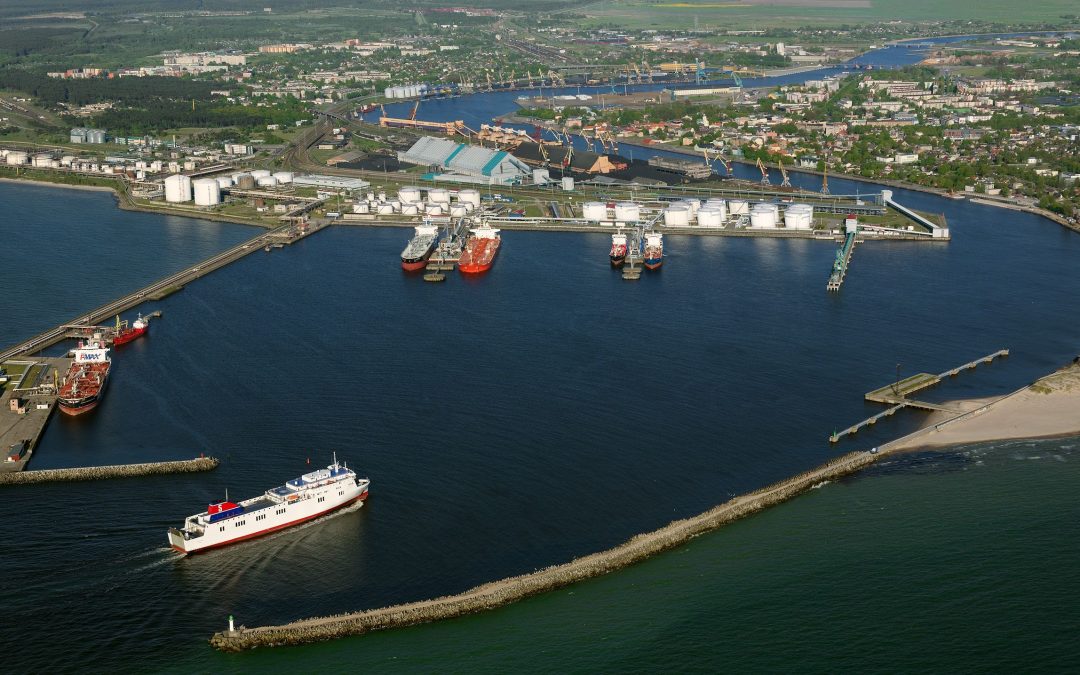
Assessment of the Transit Corridor Belarus–Latvia–Sweden within Baltic Loop
From October 2020 to March 2021 the Foundation “Ventspils High Technology Park” (hereinafter – VHTP) and “eMobility” Ltd. (hereinafter -“eMobility”) had been preparing a Case Study on the Assessment of the Transit Corridor Belarus – Latvia – Sweden within ‘Baltic Loop’ with relation to the main roles of VHTP in the project, i.e. 1) to estimate the cargo flow potential along the transport corridor Sweden-Latvia (Ventspils)-Belarus, plan improvements in the Ventspils port’s infrastructure and processes to increase efficiency and potential of cargo flows; and 2) to plan the best approach and initiate the starting development activities for Ventspils port’s hinterland (freight village, industrial cluster) in order to increase cargo flows and ensure efficient use of ports infrastructure and services.
The structure of the Study focused the following objectives:
• Analyse the current cargo flows and goods on the transport corridor Belarus-Latvia-Sweden via the Freeport of Ventspils.
• Identify hindrances and establish viable port’s hinterland development activities to facilitate more efficient use of transport corridors and port infrastructure and services.
• Identify companies from Belarus and Sweden that would be ready to invest, expand and/or relocate to the Freeport of Ventspils.
• Identify the services that the Freeport of Ventspils needs to offer to such companies (e.g. freight village).
• Provide recommendations of further activities.
In order to accomplish said tasks “eMobility” arranged a series of interviews with Latvian and international authority representatives and experts on port business and freight management along the Sweden-Latvia-Belarus corridor, who provided valuable insights on how ports are dealing with the challenges of existing bottlenecks and fluctuations in the volumes of cargoes transhipped between the East and West. An important part of the Study also covered the analysis of information attained from Latvian institutions (Ministry of Transport, Central Statistical Bureau, etc.), organisations and NGOs (Latvian ports, VIA Latvia, etc.), data from Belarusian and Swedish governmental organisations, and mass media channels.
The company also took part in conducting a survey of Belarusian and Swedish businesses as a potential niche market for the freight village to be established in Ventspils, defining the lead industries of both countries that could make use of the existing infrastructure and workforces available in Ventspils and Latvia. According to the survey a significant number of Belarusian companies are ready to relocate to another country completely or partially. However, Latvia is not the only country that tries to attract Belarusian business. Its main competitors are Poland, Lithuania, Russia, and Ukraine, who are also interested in the raw materials and commodities coming from Belarus. In terms of Swedish companies, the survey indicated that the aforementioned could be attracted by promoting their branches in Ventspils. The main attention should be paid to companies that work in the field of wood processing, manufacture of products using wood as a raw material, and high-tech/machinery, as companies in Sweden are more consumer-goods-oriented.
To ensure that the contributions of the Study are effectively heard and used, the summary included a set of recommendations on the potential of the Belarus-Latvia-Sweden transport corridor and industries willing to expand or relocate to the Freeport of Ventspils, indicating the necessary steps to ensure a competitive offer, hi-tech and innovative solutions for a flexible and productive work environment, a smooth transition and cooperation options to strengthen the image of the country and the Freeport, and ensure more regular cargo flows and diverse customers for a potential freight village and industrial cluster.
The content of the Case Study includes an overview of Latvian port and transit business (industries, cargo volumes, transhipment options, etc.), information on the cooperation in transit business between Belarus, Latvia and Sweden, and infrastructure assessment along the Belarus-Latvia-Sweden Corridor (rail and road infrastructure), economic description, SWOT and competitors’ analysis in terms of cargo flows and freight village development in Ventspils, as well as a list of Belarusian and Swedish companies that have expressed interest in expanding to the Ventspils Freeport.
The “Assessment of the Transit Corridor Belarus – Latvia – Sweden within Baltic Loop” funded by the INTERREG Central Baltic program project “Baltic Loop” within the P3 project priority ‘Well-connected Region’, SO 3.1. ‘Improved transport flows of people and goods’, project No. CB774, and may serve as an example for stakeholders, port authorities and operators in other regions and countries to address similar challenges and opportunities, as well as replicate good practices.
>> Full text version of the research paper available HERE

